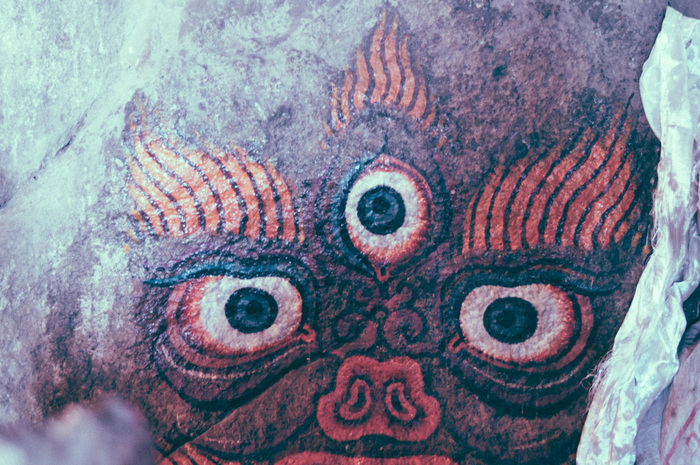The Foundation for Tantra Practice
Tantra is an advanced Mahayana practice for attaining enlightenment. It is practiced on the basis of a firm foundation in all the sutra practices, as included in the lam-rim graded path teachings. Especially crucial are:
- Safe direction (refuge)
- The determination to be free of all suffering and its causes (renunciation)
- Strict ethical self-discipline
- A bodhichitta aim (to attain enlightenment for the benefit of all beings)
- The six perfections (far-reaching attitudes, paramitas), especially
- Concentration
- Discriminating awareness of voidness (emptiness).
Once a practitioner has gained stability in their study of and training in all of these, and once intensive preliminary practices (ngondro) have been completed, one is ready to enter into tantra practice. The preliminary practices are important to purify negative potentials and build up positive ones for success in the practice. A practitioner wants to practice tantra because their compassion and bodhichitta aim are so deep and strong, they can’t bear the enormous amount of time it takes to reach enlightenment through the sutra methods alone. Tantra is the method for putting all of the sutra practices together in an extremely efficient, holistic manner.

The Meaning of the Word “Tantra”
The Sanskrit word “tantra” means “something stretched out” – stretched out in two senses of the word. One is stretched out like the warp of threads on a loom. Tantra practice is the warp on which to weave all the sutra practices together. “Stretched out” is also in the sense of an everlasting continuum throughout time, with no beginning and no end. This refers, in general, to our mental continuum – the continuum of our individual, subjective experiencing of life. This continuum includes having a body, speech (some means of communication), mind, activity, and various good qualities like understanding and care, both for self and others (the instinct for self-preservation and preservation of the species). We all have these aspects in some form and to some level of development in each lifetime. These variable factors, plus the voidness of the mental continuum (it is devoid of existing in any impossible ways) and the fact that these factors can be stimulated to evolve further, are called our “Buddha-nature factors.” They constitute an everlasting continuum, a “tantra.”
Basis, Pathway and Resultant Tantras
Each of our continuums has three phases: basis, pathway and resultant levels:
The basis level tantra is its beginningless continuum in ordinary forms in each uncontrollably recurring (samsaric) lifetime. These ordinary forms are brought on by unawareness (ignorance) of how we, others and everything exists, and the disturbing emotions and compulsive karmic behavior that it leads to. Mixed with this confusion, this continuum, filled with various forms of suffering, perpetuates itself and will go on at this basis level forever, unless we do something to remove (purify out) this confusion. The basis level tantra then is characterized as being unpurified.
The resultant level tantra is the unending continuum of our totally purified Buddha-nature factors, now in the form of the body, speech, mind, activity, and good qualities of a fully enlightened Buddha.
The pathway level tantra is the partially purified continuum that serves as the intermediary stage to bring our mental continuum from its basis to its resultant level. We do this by imagining our Buddha-nature factors – our body and so on – as appearing now as those of a Buddha in the form of a Buddha-figure (yidam, tantric deity). We do this while realizing that what we’re imagining is a level that is not yet happening, but which can happen when we have fully purified our Buddha-nature factors. Because of this feature of imagining ourselves in the form of a Buddha, tantra practice is known as the “resultant vehicle” – we practice now in a manner that is similar to the result we will attain.
Multiple Limbs
Many of the Buddha-figures that we imagine ourselves to be, with pathway tantra practice, have multiple faces, arms and legs. These are the warp threads of tantra, because on them we weave what they represent. Each bodily feature represents a different aspect of the sutra teachings of lam-rim. For example, having six arms represents having all at once the six far-reaching attitudes – generosity, ethical self-discipline, patience, perseverance, mental stability and discriminating awareness. By visualizing these six attitudes in a graphic form, we are able to remain mindful of them all simultaneously, much more easily than trying to do so abstractly.

Preliminary Practices
While imagining ourselves in such a multi-limbed form, we engage in practices, both in meditation and in daily life, to build up our networks of positive force and deep awareness (collections of merit and wisdom). We help others with love and compassion and focus on the voidness of everyone and everything involved. These two networks are also Buddha-nature factors and their strength is what causes our other Buddha-nature factors to function on the basis, pathway or resultant levels. Therefore, to kick-start the process of strengthening these networks, we engage in preliminary practices like prostration and Vajrasattva purification before attempting tantra practice.
Empowerments (Initiations)
To begin imagining ourselves as a Buddha in the form of a Buddha-figure, we need to receive an empowerment (initiation) from a qualified tantric master. We do this only if we have prepared ourselves sufficiently with the prerequisite sutra study and practice and with ngondro preliminaries. Through the power of the visualizations that the tantric master and we perform during the ritual, our Buddha-nature factors become activated and enhanced to start the transformation into those of a Buddha. To ensure that the transformation occurs without hindrance, we take various vows to avoid acting, speaking or thinking in ways that would damage our practice. These include vows of ethical self-discipline, bodhisattva vows and, in some cases, tantric vows. Without consciously taking these vows, we do not receive the empowerment, and without keeping them as purely as possible, there is no actual tantra practice.

Summary
Far from having anything to do with sexual activity or mysterious rituals, tantra proposes a highly advanced and complex system for awakening our full potential. Tantric practice is not to be taken lightly; when we actively participate in the ritual, we’re committing to uphold the vows for the rest of our lives. For this very reason, we should only commence the practice of tantra once we have a solid foundation in the tenets of Buddhism, but in particular universal love and compassion for all beings, and a good understanding of voidness.
For advanced practitioners, tantra is like a nuclear bomb for the mind. If correctly practiced, it destroys the ego and self-cherishing mind, and rapidly brings the practitioner to enlightenment, where they can be of incredible and long-lasting benefit to all limited beings.